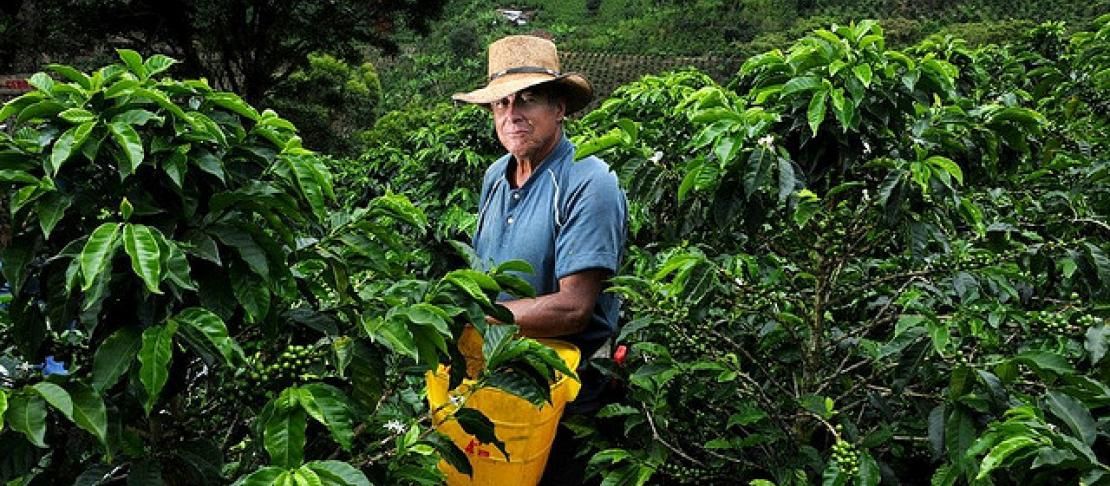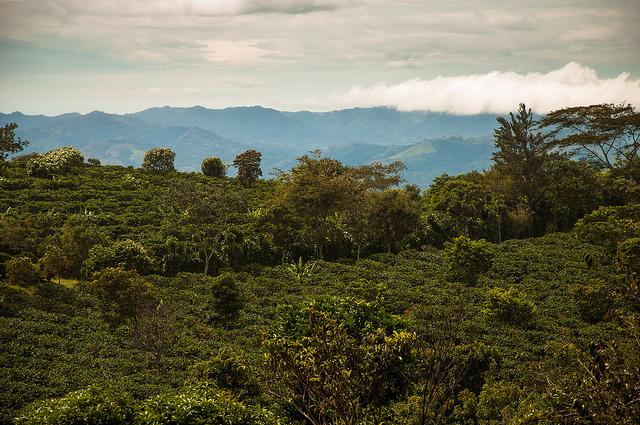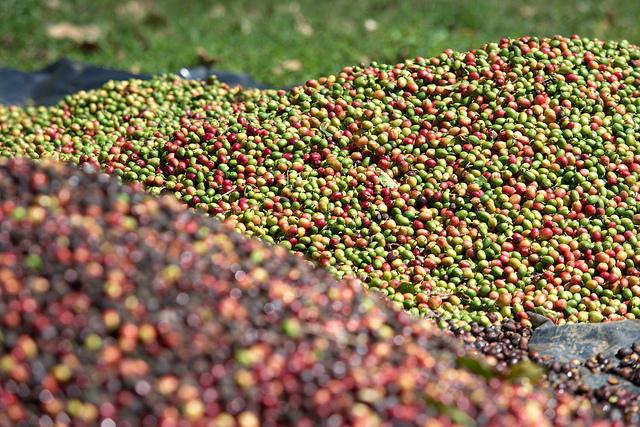Are there synergies between climate change adaptation and mitigation in coffee production?

Many studies have shown the particular vulnerability of coffee to climate change. This is due to its sensitivity to temperature changes and its specific requirements of rainfall patterns.
Furthermore, its perennial nature makes it very difficult for farmers to adapt to changes in market conditions or the environment, since investments in coffee production today may not come bear fruit until 10-15 years later. With this in mind, adaptation strategies are crucial and have to be carefully planned.
Considering that more than 70 percent of all coffee producers worldwide are smallholder farmers growing on 10 hectares or smaller, there is no wonder that the question about how a climate-sensitive transition will occur when no resources are available to them is raised?
While adaptation to climate change is unavoidable, continued efforts for mitigating climate change, i.e. reducing greenhouse gas emissions in the first place and/or sequestering CO2 in vegetation, soil, or other medias, is critical. Governments and companies worldwide are investing a lot of money in mitigating the greenhouse gases related to economic activities.
Recently, the focus of many research activities has been directed to investigating the relationships between adaptation and mitigation.
The interest in agriculture is straightforward. Agriculture is one of the major emitters of greenhouse gases and at the same time one of the most affected by climate change. Synergies between adaptation and mitigation have been found particularly evident in agroforestry systems including coffee, cocoa and livestock. Shade trees can buffer from climate extremes such as heavy winds, rainfall and more, and temperature increases while at the same time sequester carbon.
Furthermore, agroforestry systems compared to systems without incorporating trees, contribute to additional ecosystem services such as biodiversity, and are thought to improve livelihood benefits (e.g. fruits and firewood from shade trees).

Coffee fields with a few intercropped trees shading the plantations. Photo: Wendy
Learn more about intercropping: In Uganda, coffee and banana go better together
But, although this seems very promising, relevant trade-offs are present which often hinder the adoption of such systems. Trade-offs might arise on the farm scale through lower productivity with increasing tree incorporation.
On a landscape scale, trade-offs can be related to carbon sequestration; if agroforestry systems are implemented on the cost of forests, net carbon sequestration might be negative.
A newly published study developed a first approach to identifying synergies between adaptation, mitigation and livelihood benefits in coffee production in Northern Nicaragua.
Collaboration between different relevant stakeholders such as private sector, certification bodies, NGO’s, research, coffee farmers and cooperatives, aimed at identifying practices and strategies to enable a sustainable transition for smallholders to adapt to climate change. Furthermore possibilities were explored to provide the needed resources directly from within the supply chain with mutual benefits for everyone involved.
Learn more about agricultural carbon insetting for sustainable climate-smart supply chains (PDF).

Coffee beans are very sensitive to temperature change. Adaptation is crucial if we are to keep coffee production going. Photo: Counter culture coffee
There seems to be a lot of optimism although in practice there are still many issues to be clarified. There is a need to fully understand all related trade-offs and synergies. For this purpose, a methodological framework is needed that considers all relevant factors on different scales and enables a user-friendly evaluation for the private sector and certification bodies interested in climate-smart agricultural production.
Therefore, different master thesis are currently conducted on this topic and a big research project by the International Institute of Tropical Agriculture (IITA) and the International Center for Tropical Agriculture (CIAT) on identifying production technologies enabling adaptation of vulnerable coffee/cocoa-based farming systems to climate change that combine improving farmer income and system resilience with contributing to climate change mitigation is in its starting phase.
Learn more: Livelihood and environmental trade-offs of climate mitigation in smallholder coffee agroforestry systems
The aim is to contribute to filling the research gaps described above. This is to better understand trade-offs and synergies between climate change adaptation, mitigation and livelihood needs and provide stakeholders with a methodological framework to assess the potential of various production technologies. The project will be conducted in four different countries of West and East Africa.
Learn more about trade-offs and synergies in climate change adaptation and mitigation in coffee and cocoa systems
Get the study: Rahn E, Läderach P, Baca M, Cressy C, Schroth G, Malin D, Van Rikxoort H, Shriver J. 2013. Climate change adaptation, mitigation and livelihood benefits in coffee production: where are the synergies? Mitigation and Adaptation Strategies for Global Change
Eric Rahn is one of the authors to the recently published article Climate change adaptation, mitigation and livelihood benefits in coffee production: where are the synergies? He works as a researcher at the International Center for Tropical Agriculture (CIAT).



